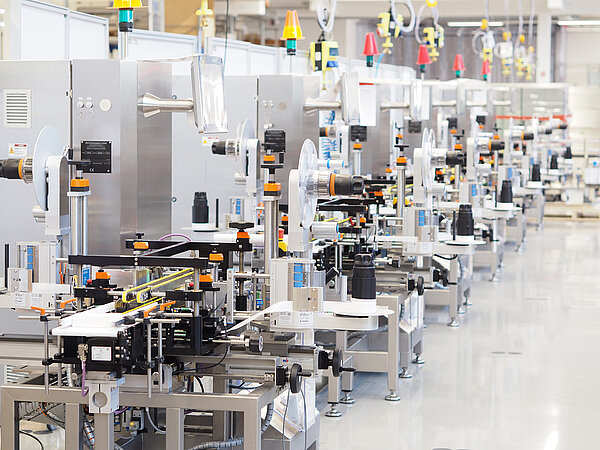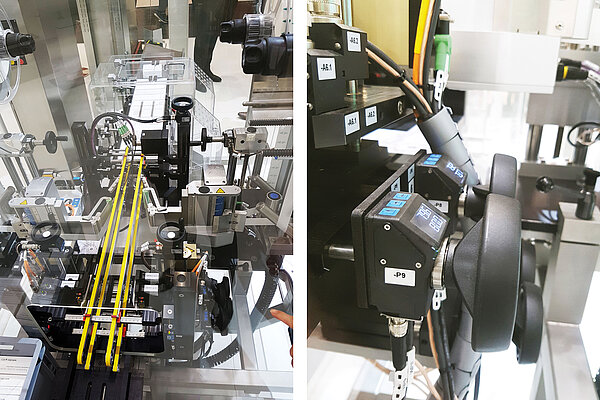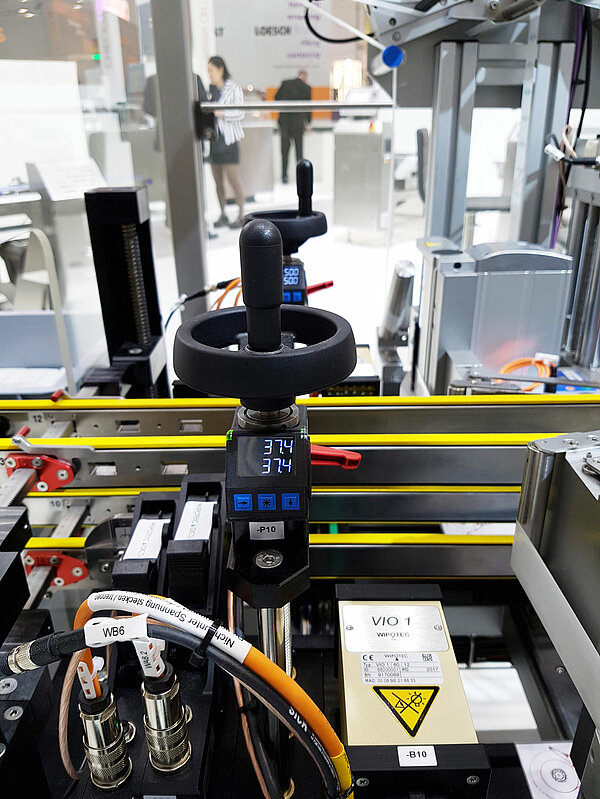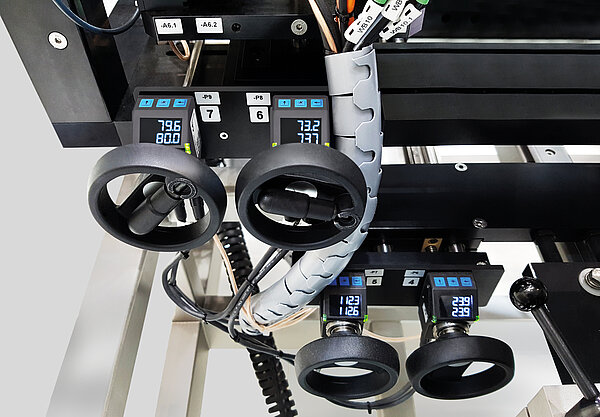SIKO position indicators ensure process security in Track & Trace systems from WIPOTEC-OCS
The introduction and starting date of the new anti-falsification directive have been known since 2016, yet the demand for corresponding Track & Trace systems on the market has only been felt in the months preceding its entry into force. WIPOTEC-OCS, which specializes in weighing and inspection solutions, including mechanical engineering for processes such as printing, reading and labelling, can only confirm this trend: "This is a massive drag on the market now. As of February, every company that produces prescription medication and wants to bring it on the market needs to ensure that serial numbers are assigned to the medication and that they have integrated a Track & Trace solution in their production line," explains Daniel Anders, product manager for Track & Trace at WIPOTECS-OCS. It is useful to have systems that can be integrated into the production line quickly and without major expenses and that do not unnecessarily slow down the production process, which would have a severe negative impact on production efficiency.
With TQS, WIPOTECS-OCS has established a system for the pharmaceutical sector that accomplishes highly modular labelling of medication according to all country-specific particularities. Serial numbering involves the potential process steps of printing, reading, labelling and weighing, which the TQS-HC-A machine combines into one unit. It is designed for folding boxes, which make up at least 90 percent of medication packaging in the European market. The boxes are labelled on the front and/or back, optionally on the top as well, and are then weighed with a high-precision high-tech load cell from WIPOTEC to detect whether the boxes are fully packed. Faulty products are automatically sorted out in this process. Where needed, tamper-evident labels can be applied to secure the packaging against manipulation.
For pharmaceutical clients, who often have long production lines, it is important to have as compact a Track & Trace solution as possible. "It should be not only compact but as inconspicuous as possible overall," states Daniel Anders. As a matter of fact, the new European directive will require high initial investments and commitment of resources from the pharmaceutical manufacturers. "We don't want complicated systems that provide additional impediments to processes," Daniel Anders asserts. "Acceptance by the pharmaceutical industry is much higher if Track & Trace machines can fit smoothly into the overall concept – and where additional benefits are created thanks to this expansion." In the end, a Track & Trace machine can simplify processes. For example, the data collected can help goods management be arranged in a much simpler and more convenient way. "Pharmaceutical companies will become increasingly aware of these benefits once the transition required by the new directive has been completely carried out and everything has been factored in. Then it won't just be a measure the law forces them to do; they’ll also see advantages for their own production."
Supervised format change with SIKO indicator
A small but highly significant component on the machine offers additional advantages from being "non-intrusive" in the overall line: the position indicator AP05 from SIKO provides an option for supervised format changes. An optimized format change facilitates batch changes between various packaging sizes. The trend is towards smaller batches, which also means more frequent changes. This means that all units generally need to be shifted on two axes. Up to 13 SIKO indicators may be installed in a TQS-HC-A.
These shifts are best carried out quickly, in a controlled and reliable manner. Electronic AP05 indicators are bus-compatible and can be integrated into the machine controls. Here, new target values for the next folding-box size (stored in the machine controls in a recipe list for each product) can be transmitted to the position indicator and appear in its display under the current actual value. If the actual and target values match, the integrated LED lights of the position indicator will switch to green. Otherwise, the LED will be red – Position not yet achieved. The machine is ready for operation again only when all LED indicators are green, and only then can production operation be started securely. Incorrect settings will no longer occur. From the LED lights, the operator can see which shift points still need to be adjusted. This prevents defective goods and increases process security.
"What we care about is secure reproducibility of the settings," says Daniel Anders, "to ensure that every batch and every product receives the same exact code and seal, if relevant, as the ones before. This is ensured by the AP05. Another advantage: Changeover times are significantly shorter and therefore more efficient, with a supervised format change thanks to the SIKO AP05 position indicator." The medication manufacturer does not need to worry so intensively about this secondary process and can focus instead on the extensive line clearance and documentation needed in the pharmaceutical sector for quality and safety reasons.
Customer demand for more process security
In the past, TQS machines from WIPOTEC-OCS were equipped as standard with mechanical position indicators from SIKO to indicate the current position of the axes. The monitored electronic variant AP05 is mechanically compatible and so can be retrofitted at any time. Electronic SIKO indicators were first installed in the TQS-H-A because of a customer request, as Moritz Müller, PositionLine Product Manager at SIKO, remembers: "Our orange SIKO meters have been used at WIPOTEC-OCS from the beginning. When a pharmaceutical customer requested WIPOTEC for a secure solution for format changes, we were thrilled when the team approached us to collaborate on implementing this customer request."
Since WIPOTEC’s origins lie in special mechanical engineering, specific customer requests are a matter of course. "Companies that need something special when it comes to product inspection have always been in good hands with us," explains Daniel Anders. "For instance, if a company wants to produce heart-shaped bags, then we will build them a machine to do that. And from then on it becomes one of our standard products." The newly equipped TQS-HC-A machines quickly persuaded other WIPOTEC customers of the advantages of electronic position indicators. Reproducibility of settings, process security to prevent defective products and damages to the machines, along with a reduction of equipping times, justify the higher initial investments when compared with the standard mechanical variant. Moritz Müller is convinced: "Once the biggest upheavals have finished, more pharmaceutical manufacturers will come back to the benefits of guided, secure format change. Retrofitting is possible at any time."
Author: Michaela Wassenberg, freelance journalist
Characters: 7,263
Characters with spaces: 8,328










